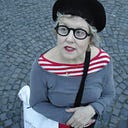Everything on Earth
How Natural History Museums Around the World Are Dusting off Their Collections to Answer the Most Critical Questions of Our Time
Everything On Earth
How Natural History Museums Around the World Are Dusting Off Their Vast Collections to Answer the Most Critical Questions of Our Time
By Meredith F. Small
The group of third graders being led through the Hall of Biodiversity at the American Museum of Natural History in New York City have no idea. The couple from California admiring the stuffed African elephant standing proudly in the rotunda of the Smithsonian Natural History Museum in Washington D.C. is clueless. The group of older visitors taking the “Nature Walk” to view various recreated animal habitats at the Chicago Field Museum think this is the highlight of the museum, but they are wrong. What visitors see is only a tiny fraction of what these edifices contain. Behind the public exhibits, upstairs closed off from tourists, there are floors and floors of storerooms, areas crowded with closets, shelves, drawers, and cabinets all full of bones, skins, taxidermized animals, minerals, seeds, pollen grains, gems, feathers, and human cultural objects from all over the globe that also span centuries. And yet this phantasmagoria of stuff is inaccessible to everyone but a select few.
But that’s about to change.
These museums are unexpectedly joining forces to create one universal, vast, source for answering some of the most critical questions of our time. As recently announced in the New York Times[1] and the academic journal Science[2], this new initiative has begun with a shared database on who has what in natural history materials. Developed by the National Museum of Natural History (the Smithsonian), this effort is starting with a collaboration among 73 natural history museums from 28 countries that have contributed lists of their collections organized by region and type with intimate details of their holdings. And that list, at 1.1 billion items, is just the beginning.
The larger goal is to join the collections of every natural history museum on earth together — huge national ones, smaller regional holdings, and those on college campuses as well as quirky small collections — into one huge database available to all. More significantly, this global collaboration is aimed at answering some of the most immediate questions about life on earth — Which species are going extinct, and does it matter? What effect does climate change have on the disappearance or evolution of various species? How has human encroachment and habitat destruction affected the natural world?
Humans have always been collectors. Ever since our ancestors stood up on two legs and walked across the savannah, they were also picking up objects as they walked. We know from paleontological and archaeological evidence that early humans held on to natural objects and eventually turned some of those objects into useful tools or decorations. Like other animals, humans are evolutionarily compelled to study their surroundings while getting about and gathering food, but humans take this process much further, cataloging and analyzing what they pick up. Today, even with natural history museums all over the place, people still pick up containers of sand from foreign beaches, colorful berries from a forest floor, and wildflowers along the highway. Every child has a collection of something like rocks or butterflies or pressed leaves.
With all this interest in our surroundings, it’s not a surprise that a concept of an organized personal collection was eventually invented by the Renaissance elite with their “Cabinets of Curiosity,” those pigeon-holed pieces of furniture full of preserved animals and pressed plants. These were considered precious objects that could only be appreciated by educated aristocrats and a way to reinforce the idea that they were more “informed” than others. The Age of Discovery or Age of Exploration during the 15th to 17th centuries brought grand sea voyages aimed at finding new resources that could be traded back home and these voyages also filled up their cabinets. In that sense, our museum collections today are based on capitalism and exploitation. But they are also the result of the collecting and preserving skills of these explorers and their crews — think Charles Darwin and Captain Cook — which came back with shiploads full of natural objects. They brought back such a wide variety of interesting objects that Western cities began to stockpile the collections in buildings which then became the natural history museums of today. And now, those collections are being expanded by modern-day scientists as they crawl through dense jungles, trudge across deserts, walk slowly over tundra, and explore barrier reefs, picking up as they go. These scientists are in search of new species, looking for evidence of lost species, and often focused on how all these plants, animals, and insects have adapted to environmental change.
Once considered the “dark data” of biology because they have been traditionally hidden away, this new global initiative acknowledges that these collections are, instead, the Crown Jewels of Earth’s natural history and should be used to address essential questions about life on Earth for humans and other species. And it’s not an exaggeration to suggest that this ambitious worldwide biological naval gazing might just save us from our own destruction.
[1] Zimmer, C. 2023 Science museums take stock of 1.1 billiion objects from around the world. The New York Times 3/23/2023.
[2] Johnson, K.R. and I.F.P. Owens. 2023. A global approach for natural history museum collections; Integration of the world’s natural history collections can provide a resource for decision makers. Science 379 (6638):1192–1194.
